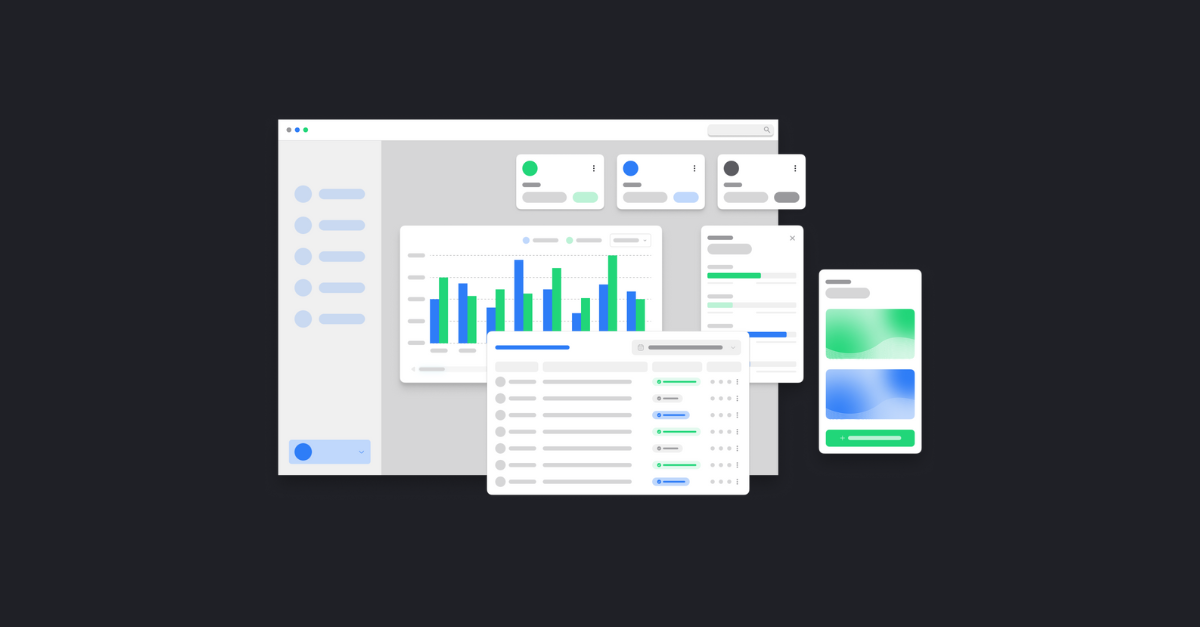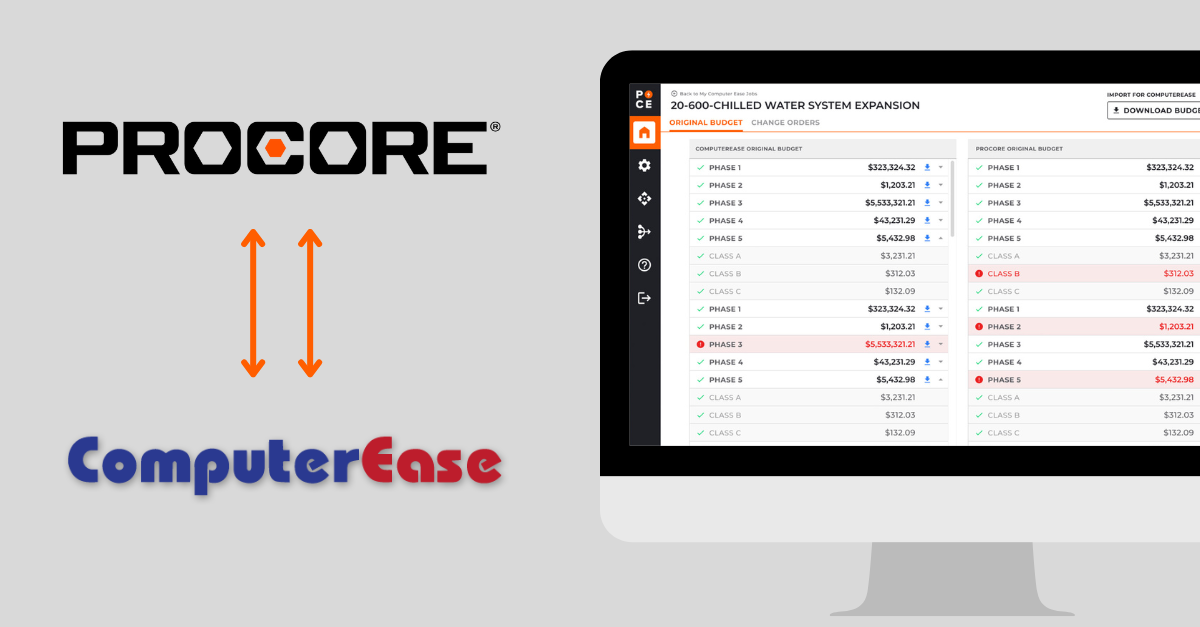So, you just signed up for new custom business software — great! While you’re excited to tackle this new project, you might also be a little overwhelmed about what to expect in the coming weeks or months. After all, you’re not an expert in software development (and you don’t need to be).
There are a lot of pieces to the puzzle in software development. Even if you’re tech-savvy, you might need to learn some new technical processes and terms used by your tech partner. Like any project, success relies on communication, collaboration, and understanding.
Use these tips below to better prepare for managing a new software project. It’ll help you and your team understand what to expect and how to best communicate with your software development partner.
Get to Know the Team Delivering Your Project
Who will you be working with? Most software projects need a diverse set of skills throughout the development process. So you’ll most likely interact with a handful of different professionals at any given point. As you do, it’s helpful to understand their roles and how they’ll impact your project.
- Product Manager — Champions the product roadmap and keeps everyone on the same page. They execute daily strategy and manage the resources that will lead to your success.
- UI/UX Designer — Skilled at what it takes to craft strategic user experiences. Their interactive process ensures your end result is both intuitive and pixel-perfect!
- System Analyst — Provide business-minded and code-friendly attention on the project’s every detail. They have quality assurance, maintenance, monitoring, and support covered.
- Front End Developer — Turn strategy into reality with polished components that reflect your unique business – and that creates results.
- Back End Developer — Build your product with high technical standards engineered with people in mind. Custom programming and architecture allows your product to thrive and scale!
Overall, you’ll work with your tech team’s product manager the most throughout a project. Read more about how this role is dedicated to the overall success of your project.
Familiarize Yourself with Their Development Processes
At your project kick-off, your partner will probably walk you through their development process at a high level. It’s easy to overlook this conversation. But it’s a good idea to do some legwork to learn the principles of their project management style because it’s what enables them to deliver a quality product on time and on budget.
For example, SPARK uses agile planning for our software projects. In a nutshell, agile planning completes software development in small incremental steps. At each step, there’s time for reflection and feedback, allowing us to easily accommodate for any needed changes along the way. This ensures faster projects with an end result that clients are happy with.
While you don’t need to be an expert in a framework like agile to get through a project successfully, it’s helpful to understand the basics so you can follow along better.
Communicating What “Done” Means
Throughout your project, you might be wondering what is getting “done.” But what will “done” mean? Is your partner “done” with your project? Are they “done” with just a feature requirement? Or, did they complete a whole development phase?
As you communicate with your tech partner throughout the project, be specific (and ask the same of them) when discussing when something is “done” so you have a clear understanding of your project’s progress and milestones.
Tracking Delivery Dates
Delivery dates can often cause the most confusion or frustration during project communication. Your tech partner will use multiple delivery dates throughout a single project to gauge progress. There will be different delivery dates for each stage like:
- Development
- QA (Testing)
- Client Review (User Acceptance Testing)
- Go-Live
And, let’s say that you request a new feature during the QA phase that needs to be implemented into the project. While necessary, developing the new features moves back the delivery date by two weeks for the QA phase. Once that happens, then the delivery dates for the stages afterwards will also be impacted.
When speaking to your tech partner about delivery dates, it’s important to consider the stage of your project and what delivery date you’re speaking to.
Also, your tech partner might use a project management tool to help make delivery dates and project progress visible for all involved. You won’t need to spend much time looking at a tool like this, but it can be critical in keeping everyone on the same page (and happy).
Managing Scope Changes
Scope changes happen when the client and development team agree to make a change from your initial project scope. It can be adding a feature or reducing functionality. Either way, they’re a natural part of delivering software solutions as the development process will likely lead to new insights about what should (or shouldn’t) be developed. Being responsive to these changes is baked into common development frameworks like agile.
When you change the scope of a project though, it also affects your budget and timeline. For example, a new feature could take 10 additional hours of development work. These hours now need to be factored into your project’s cost and development planning.
For a scope change, you can usually expect your tech partner to communicate the change, seek your approval on it, and communicate its impact on your budget and timeline.
For that reason, it’s important to track and understand each scope change on the outcome of your project. Changes are a necessary part to software development, but you don’t want them to derail your project entirely. So, always discuss your change requests with your development team to check them against the high-level goals of your project.
Read stories about successful business tools launched with SPARK →
Committing to Weekly Status Reports
There are a lot of moving parts to the development process. The best way to keep transparency and accountability through progress, changes, and issues is frequent and efficient communication between both teams.
At SPARK, we use weekly status updates with clients as consistent communication for how your project is going. We also connect regularly with clients using check-in and planning meetings. While committing to a recurring meeting might seem like a lot of time to give up, it’s a critical touchpoint to stay on the same page and seize on newly surfaced opportunities. These meetings might only be 15 minutes, or they can last longer depending on what’s discussed. During them, you can also expect to discuss scope changes, delivery dates, and more, so it should be valuable facetime with your tech partner.
Planning for User Acceptance Testing
An often overlooked part of the software development process is user acceptance testing. At this phase, most tech partners will ask the client to take part in testing to ensure the software solution meets project requirements.
This stage is crucial to the success of your project (and can be fun)! It’s your chance to interact early with the software to see what you like and call out what might need to change. It’s also a great point to involve your key stakeholders to test it themselves, too. This can help get early buy-in from your team, helping with a smoother implementation.
Be prepared to commit time to this phase. While it might be hard for you or other stakeholders to prioritize it over your daily job, delays at this stage can result in longer project timelines. You should also plan for a simple mechanism to collect feedback from your team during testing. A basic shared spreadsheet (or similar collaborative document) can help you track the things your team notices, likes, or dislikes.
Learn more about how to prepare for user acceptance testing during your software project.
Dealing with Software Bugs
A bug is an incorrect or unexpected behavior from your software. For example, it could be as simple as a button not leading to the intended web page. It’s common to encounter some bugs during your project testing and after go-live.
Ask your tech partner the best way to communicate bugs to them. They will often request you to submit a support ticket with some details and screen shot of the issue. This helps them organize, prioritize, and fix bugs efficiently for you.
Read more about why software has bugs and how to handle them to keep your solution running smoothly.
Rolling Out Your New Software To Your Team
You also might be a key role in rolling out the new software solution to your team. After weeks of development, you might be tempted to rush this part! But, a successful rollout requires intentional planning and communication.
To prepare your organization, learn and follow our Implementation Checklist. It’ll be your game plan to help with a smooth adoption so your team fully realizes the potential of the new solution that you all worked so hard on!
What to Expect at Go-Live
The big question of any project is, are you “live” yet? Everyone wants to see your users actually using the tool and meeting your goals for the solution.
From your development team’s perspective, your solution is usually “live” when it’s ready for your team to use and there’s no remaining backlog for the current phase!
Once you reach the development finish line though, it doesn’t mean that you’re done working with your new partner. It’s still normal to uncover a bug after go-live that can be handled through their Support process. And, it’s best practice (in most cases) to maintain a relationship with your partner.. They’re there to help you with any issues, new feature requests, training, or building out a Phase Two of your solution.
***
Now that you’ve seen the process and parts to your custom software puzzle, you should feel empowered to begin working with your development partner. You can ask better questions, communicate expectations to your team, and help make it happen!
If you have a software project that requires high levels of communication, professionalism and attention to detail, reach out to SPARK to see how we can work together to build something you’ll be proud of!





